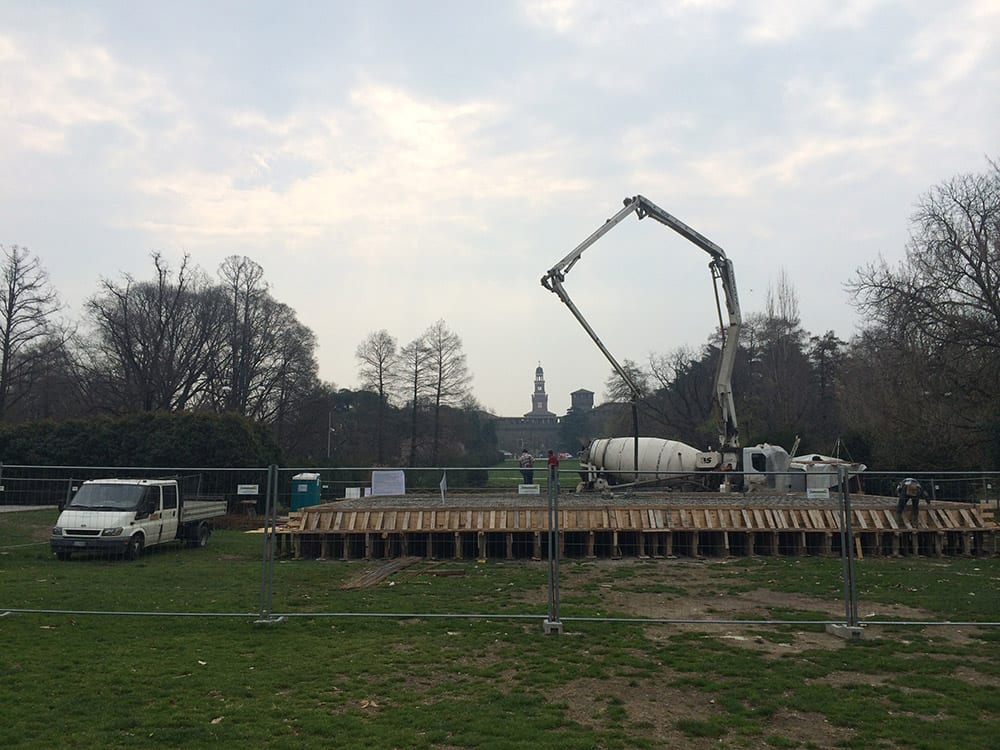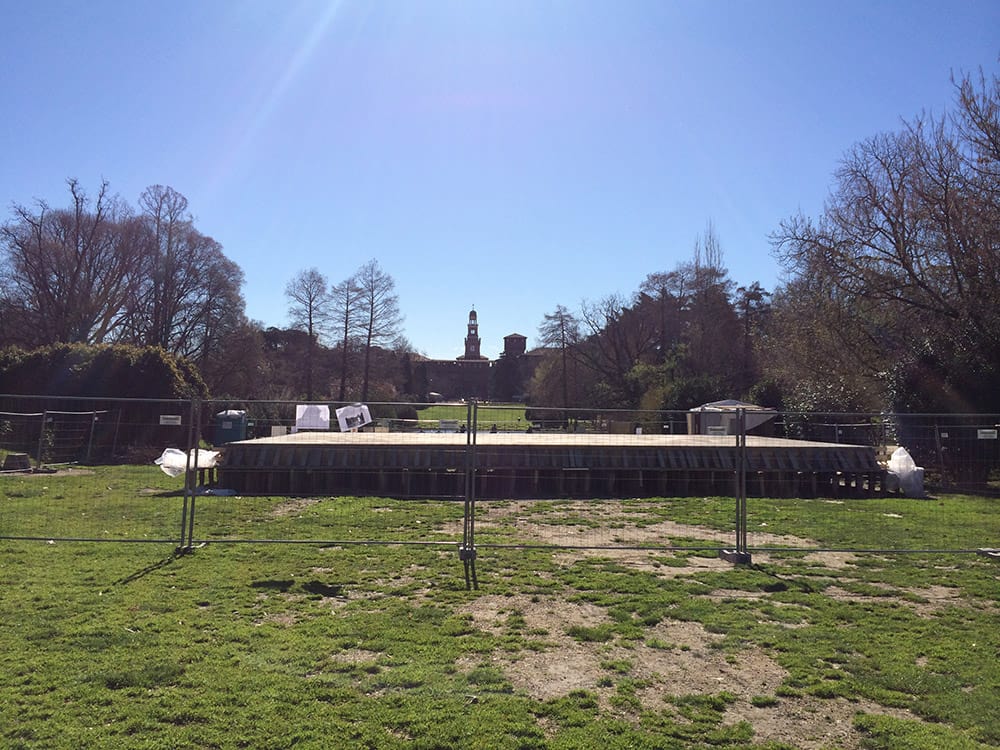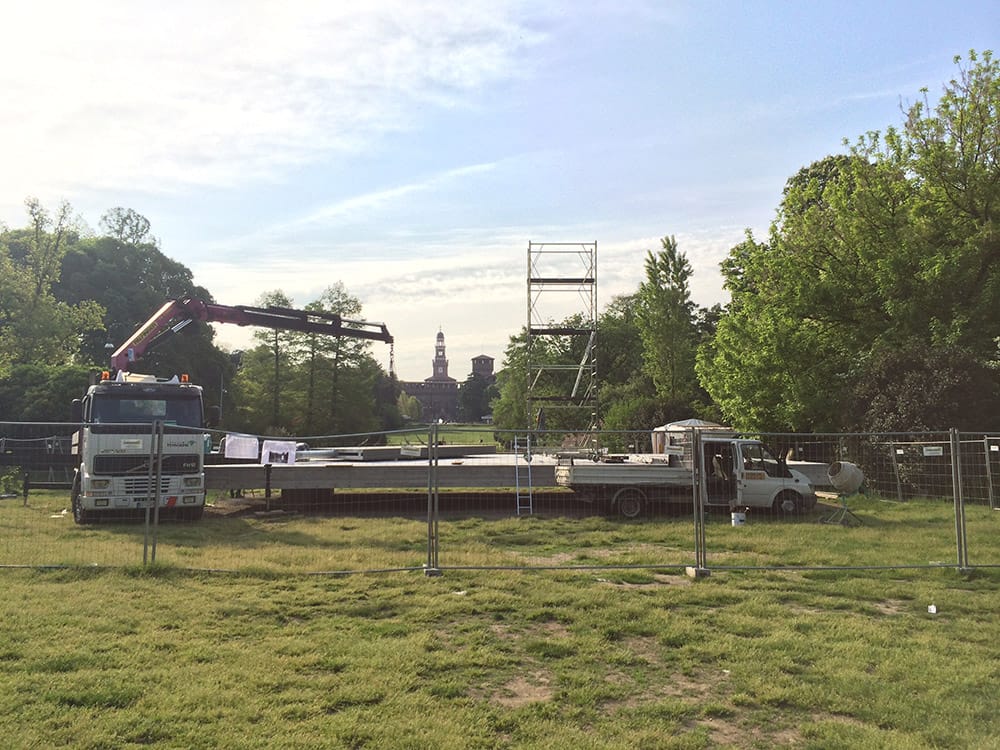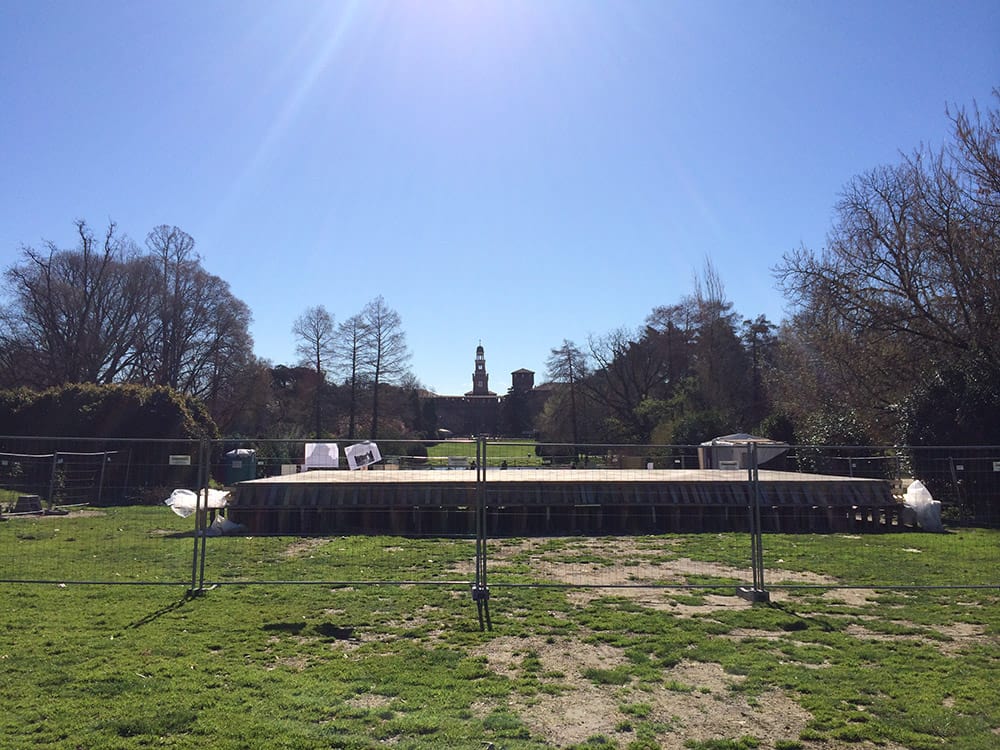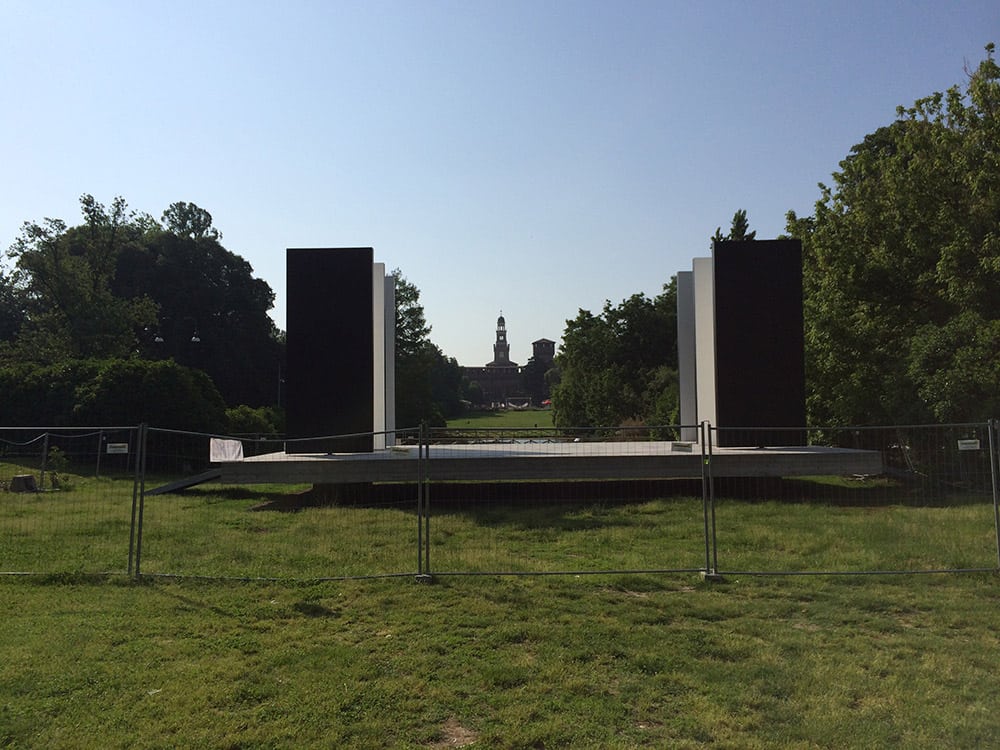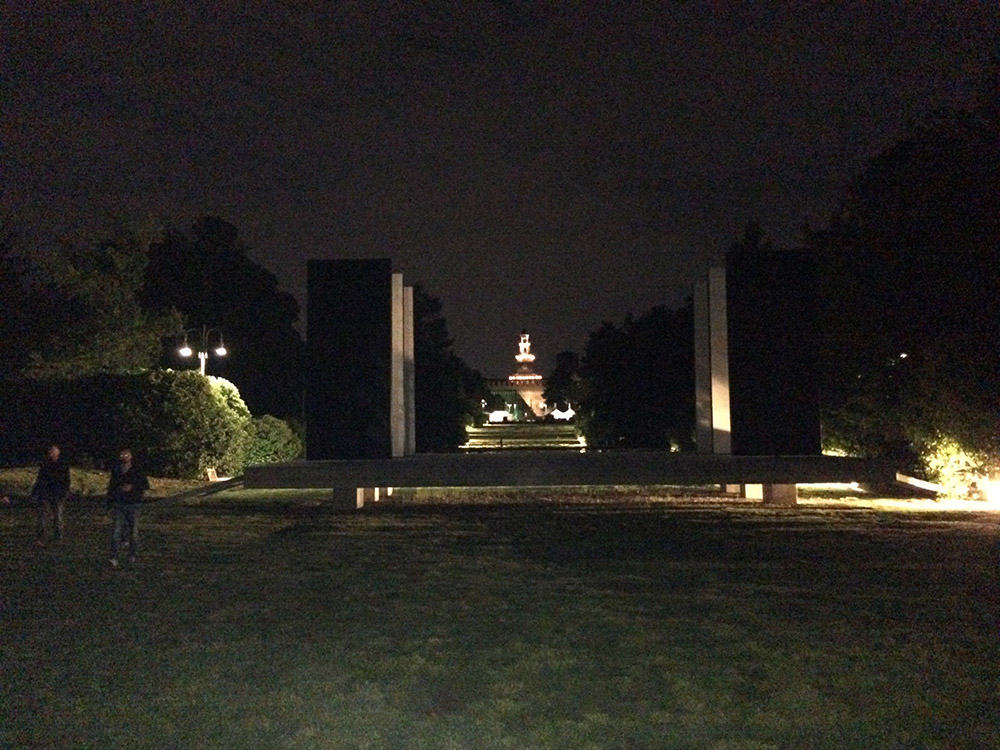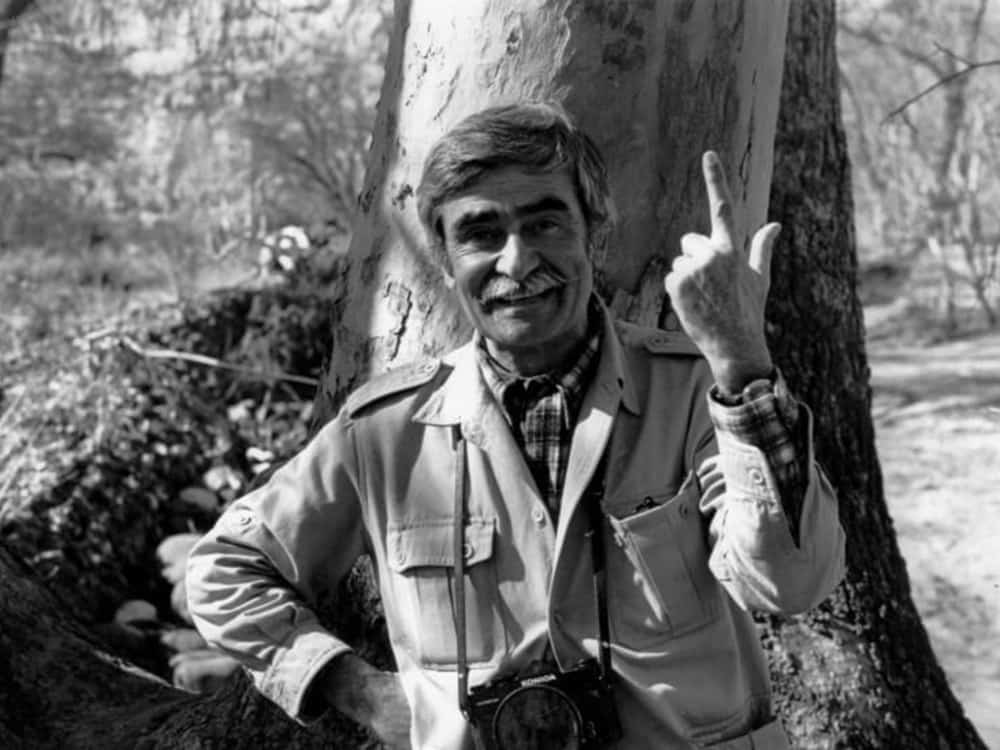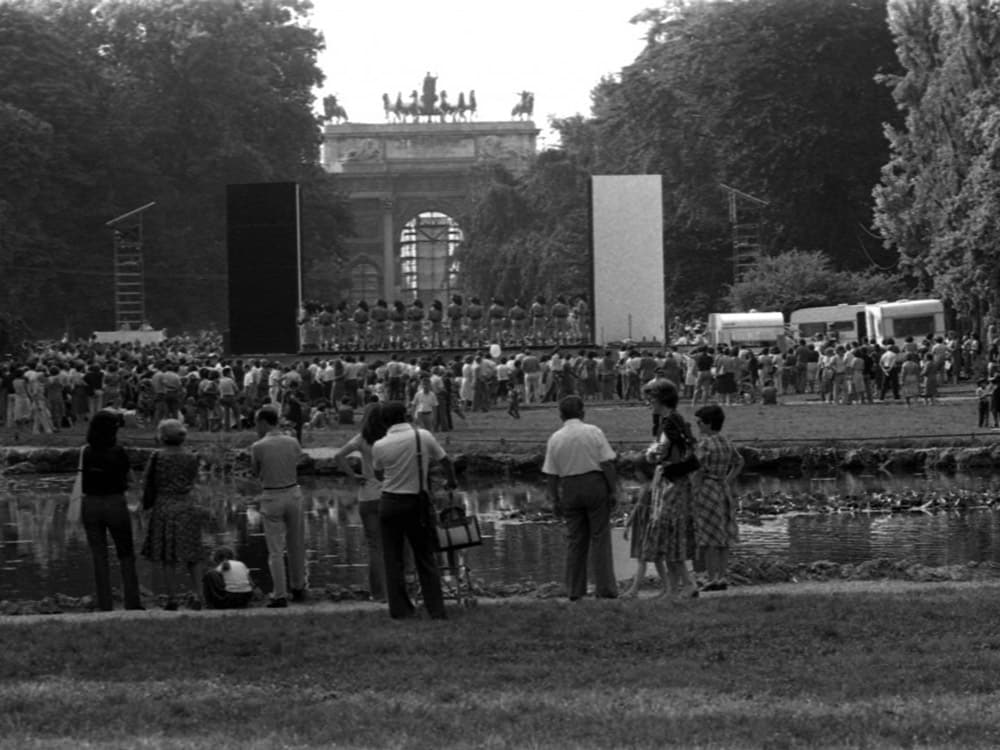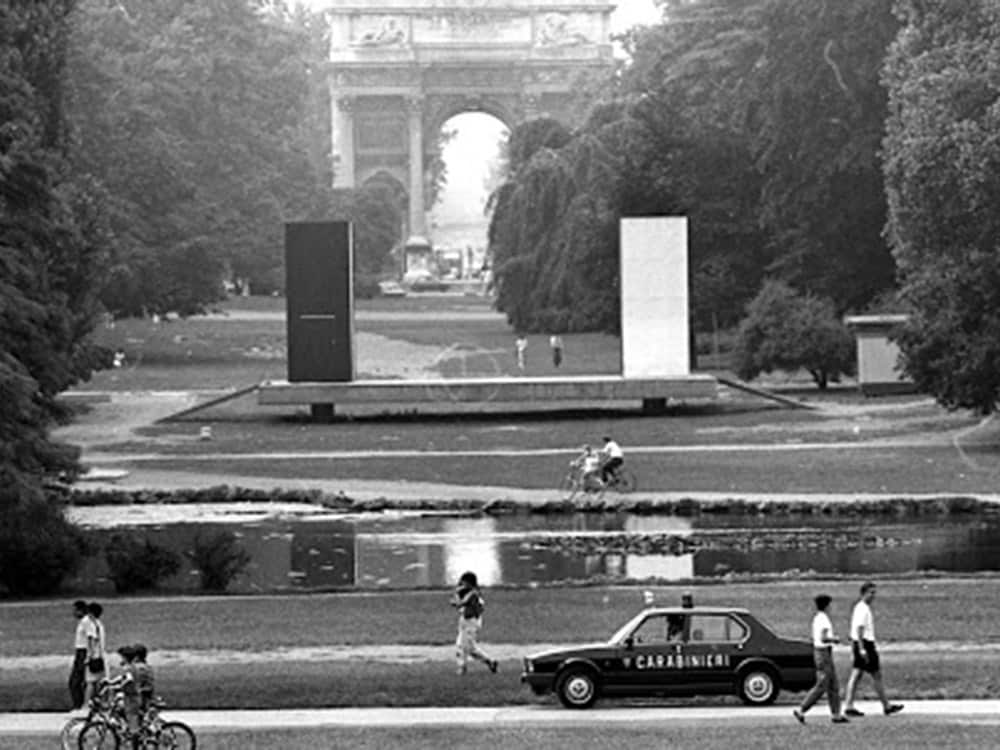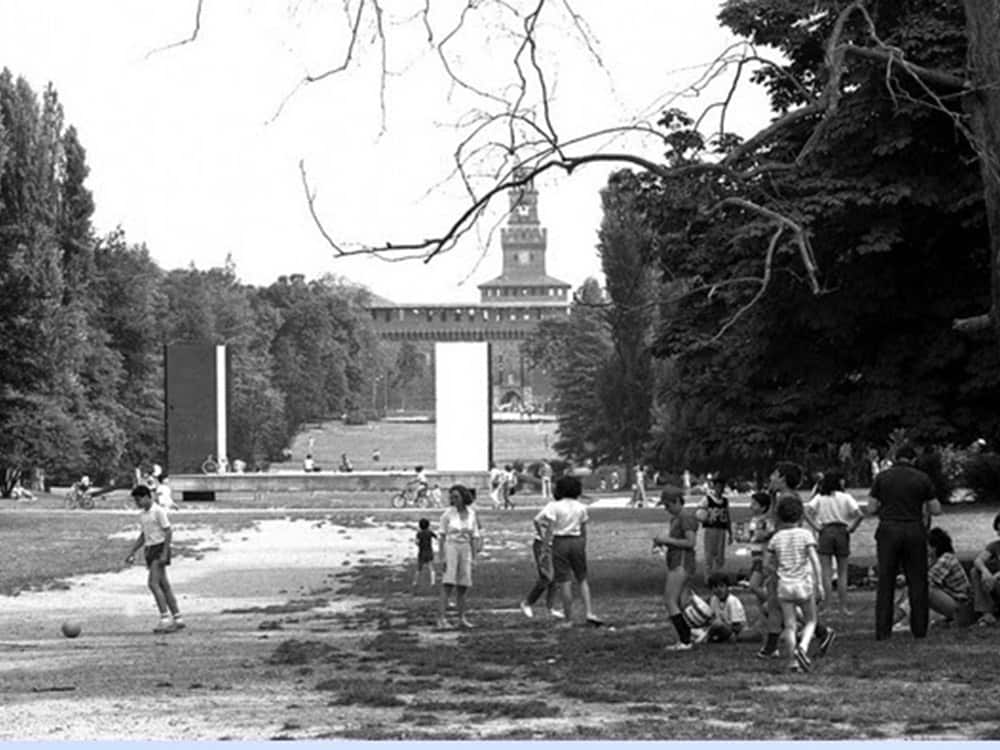In 1973 for the opening of the 15th International Triennale (the famous design and architecture exhibition that takes place in Milan since the thirties) Alberto Burri built a very suggestive art piece: “ Il teatro continuo”. I was 13 at the time and this artwork became a natural focus of the beautiful prospective that you can appreciate between the Sforza Castle and the Arco della Pace, two of the most famous monuments in town. Generations of kids like me used that huge artwork, regardless to its noble birth, as a simple structure were we could meet, play, lie, write unforgettable sentences and smoke some joints until 1989 when the city decided to remove it for good. After almost twenty years the Parco Sempione was cleaned up of one of its more characteristic presences and nobody talked about it anymore. Some months ago, during one of my early morning walk through the park, I noticed a small construction site exactly were the “Continuous Theater” used to be. I came home and found out on the internet that this year is the centenary of Alberto Burri’s birth and that city Municipality decided to commemorate this great artist rebuilding its artwork exactly in the same location where it used to be.
After almost twenty years the Parco Sempione was cleaned up of one of its more characteristic presences and nobody talked about it anymore.
Some months ago, during one of my early morning walk through the park, I noticed a small construction site exactly were the “Continuous Theater” used to be.
I came home and found out on the internet that this year is the centenary of Alberto Burri ‘s birth and that city Municipality decided to commemorate this great artist rebuilding its artwork exactly in the same location where it used to be.
Alberto Burri was one of the most significant Italian post war abstract artist; his work goes from painting to sculpture with a strong investigation of the expressive qualities of materials. Around 1949–50 he experimented with various unorthodox materials, fabricating tactile collages with pumice, tar, and burlap as in his sacchi (sacks), which were initially considered assaults against the aesthetic canon. At this time, he also commenced the muffe (molds) and the gobbo (hunchback) paintings; the latter were humped canvases that broke with the traditional two-dimensional plane. This makes him occupy a very relevant place in the “Art Informel” movement but with the exhibitions held in USA between 1953 and 1955 his career was internationally consecrated.
Part of his work is now preserved and exhibited at Fondazione Palazzo Albizzini at Citta’ di Castello close to Perugia (Umbria) were the artist was born in 1915. If you have the occasion of visiting this absolutely astonishing area and you are a modern art lover don’t miss the visit!
Web Site:
Fondazione Palazzo Albizzini
Elisabetta
[socialWarfare]

